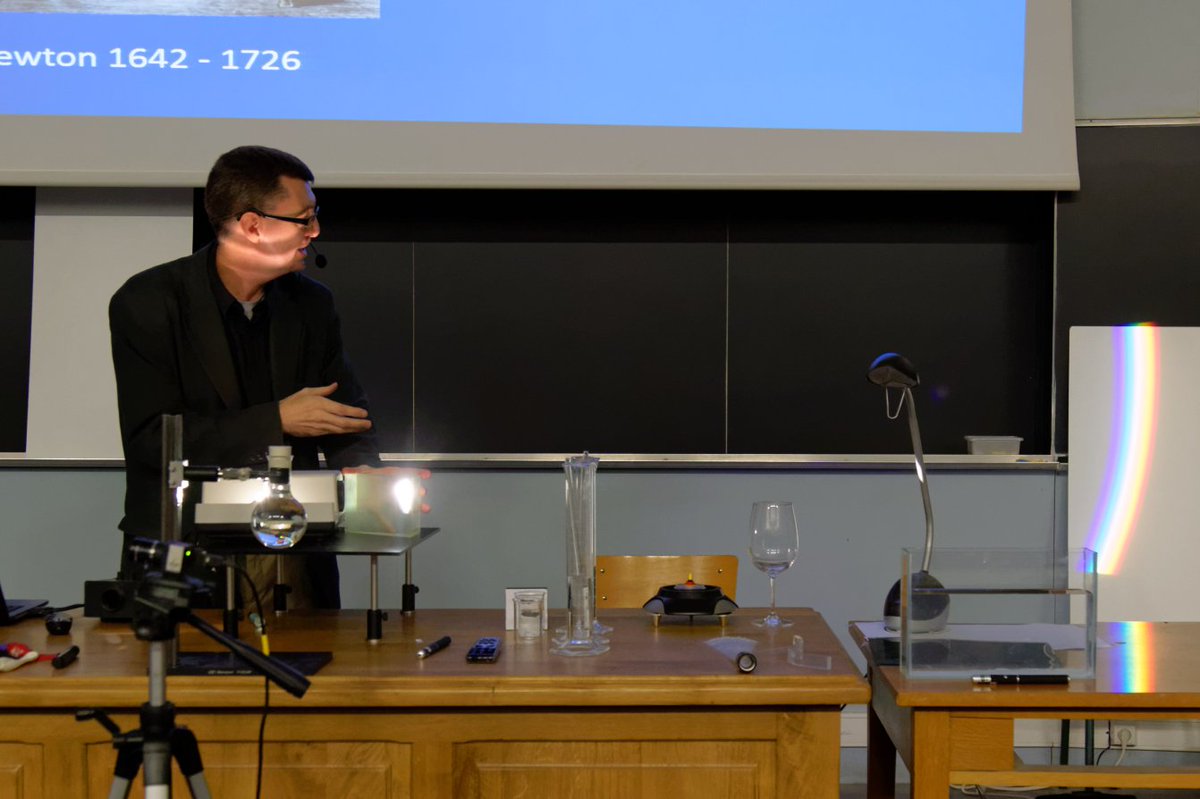
Physicist. Nonlinearity, optics, extremes, outreach. Fundamental Chair IUF France, Hon FRSNZ. Keeping this account for the moment, but mainly on 🦋
How to get URL link on X (Twitter) App



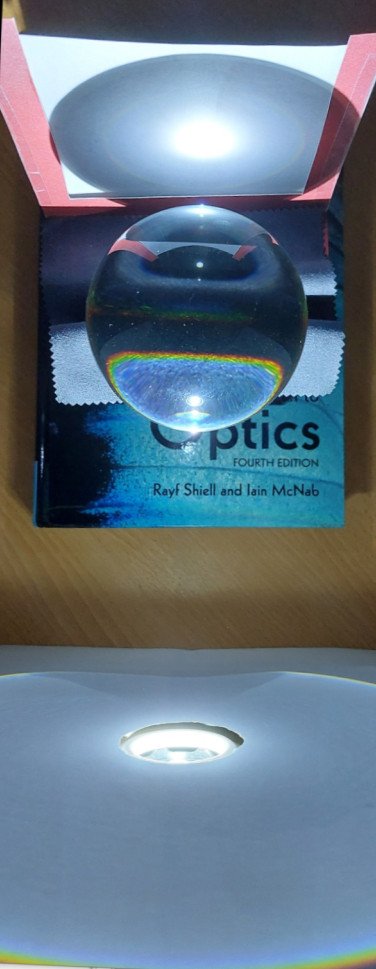 So the photo above shows simultaneously primary, secondary, and tertiary bows! Very nice. For completeness, I am going to now show some raytracing pictures for this case of all three caustics. First with one ray comparing ray paths in water and glass.
So the photo above shows simultaneously primary, secondary, and tertiary bows! Very nice. For completeness, I am going to now show some raytracing pictures for this case of all three caustics. First with one ray comparing ray paths in water and glass. 

 Where is the secondary bow? It took longer than it should have to find it, and it turns out it’s a long way away, nearly perpendicular. An angled screen helps and the secondary is then clearly seen with inverted colours as expected. But why is it so far away from the primary?
Where is the secondary bow? It took longer than it should have to find it, and it turns out it’s a long way away, nearly perpendicular. An angled screen helps and the secondary is then clearly seen with inverted colours as expected. But why is it so far away from the primary? 

 The story begins in 1979 when Feynman gave the Sir Douglas Robb Lectures at the University of Auckland in New Zealand. These talks were a testing ground for his 1983 UCLA Alix G. Mautner Memorial lectures, widely considered to be the basis of the 1985 book.
The story begins in 1979 when Feynman gave the Sir Douglas Robb Lectures at the University of Auckland in New Zealand. These talks were a testing ground for his 1983 UCLA Alix G. Mautner Memorial lectures, widely considered to be the basis of the 1985 book.

 The story begins with our project with @SSAC_Univfc to save the lab archives that date back over 100 years. We found many old cans of photographic negatives from the 1970s and one was especially intriguing – who were these "ancestors"?
The story begins with our project with @SSAC_Univfc to save the lab archives that date back over 100 years. We found many old cans of photographic negatives from the 1970s and one was especially intriguing – who were these "ancestors"? 


 Harriot was a polymath. He produced the first telescopic drawing of the moon before Galileo, he discovered the law of refraction before Snell or Descartes, and he explored Virginia, learning Algonquian to translate. It would be nice to know what he looked like.
Harriot was a polymath. He produced the first telescopic drawing of the moon before Galileo, he discovered the law of refraction before Snell or Descartes, and he explored Virginia, learning Algonquian to translate. It would be nice to know what he looked like. 

 Although this paper isn’t really what we would describe today as non-linear optics. Rather it describes “vacuum light-light scattering” or nonlinear QED. But the wording Schrödinger used definitely sounds familiar! It builds on earlier work by Born, Infeld, Euler.
Although this paper isn’t really what we would describe today as non-linear optics. Rather it describes “vacuum light-light scattering” or nonlinear QED. But the wording Schrödinger used definitely sounds familiar! It builds on earlier work by Born, Infeld, Euler. 
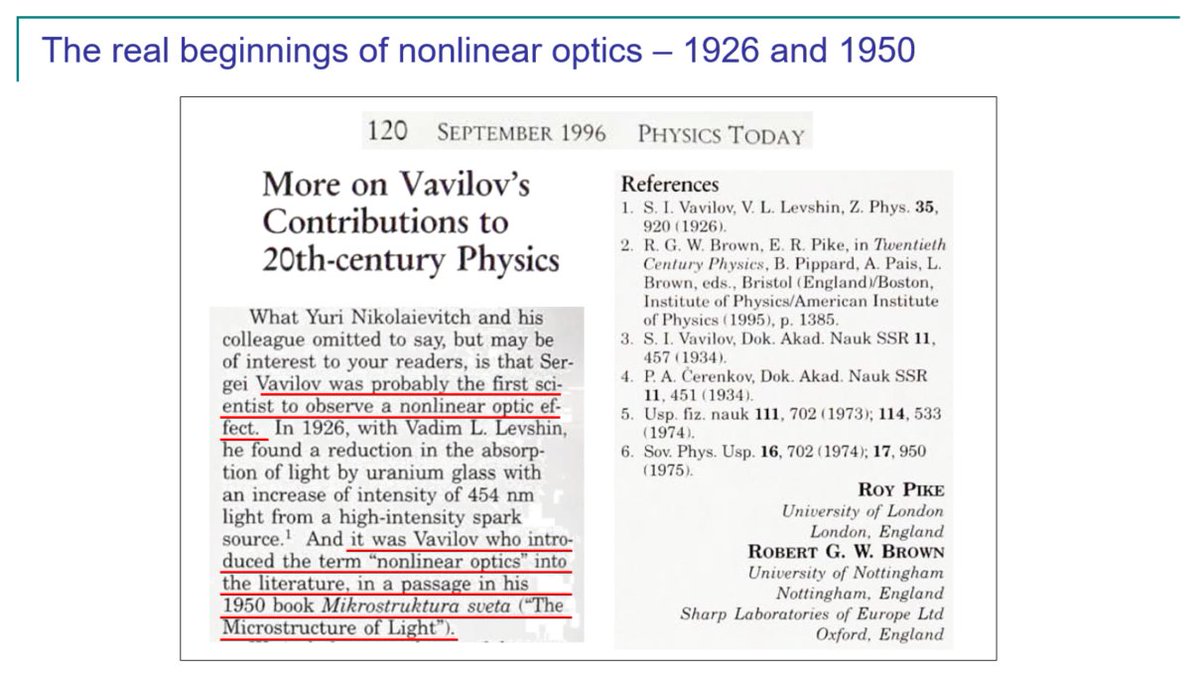
 Sergey Ivanovich Vavilov (Серге́й Ива́нович Вави́лов) was a giant of physics. He invented the term "nonlinear optics" in his 1950 book & was co-discoverer of Cerenkov radiation. Regrettably he died before the Nobel Prize for Cerenkov radiation was awarded in 1958.
Sergey Ivanovich Vavilov (Серге́й Ива́нович Вави́лов) was a giant of physics. He invented the term "nonlinear optics" in his 1950 book & was co-discoverer of Cerenkov radiation. Regrettably he died before the Nobel Prize for Cerenkov radiation was awarded in 1958. 
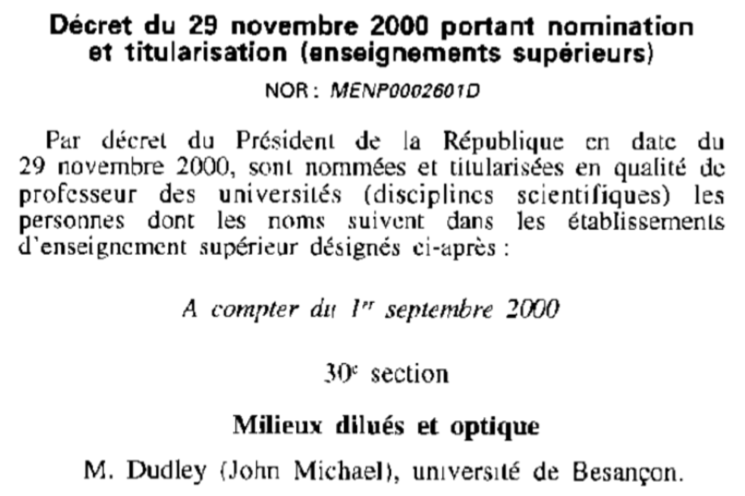
 Important caveat. Don’t believe for a second that everything ran smoothly! Many failures - rejected papers & funding, most ideas went nowhere, many mistakes. But you keep at it and with LOTS of help you somehow get somewhere in the end.
Important caveat. Don’t believe for a second that everything ran smoothly! Many failures - rejected papers & funding, most ideas went nowhere, many mistakes. But you keep at it and with LOTS of help you somehow get somewhere in the end.
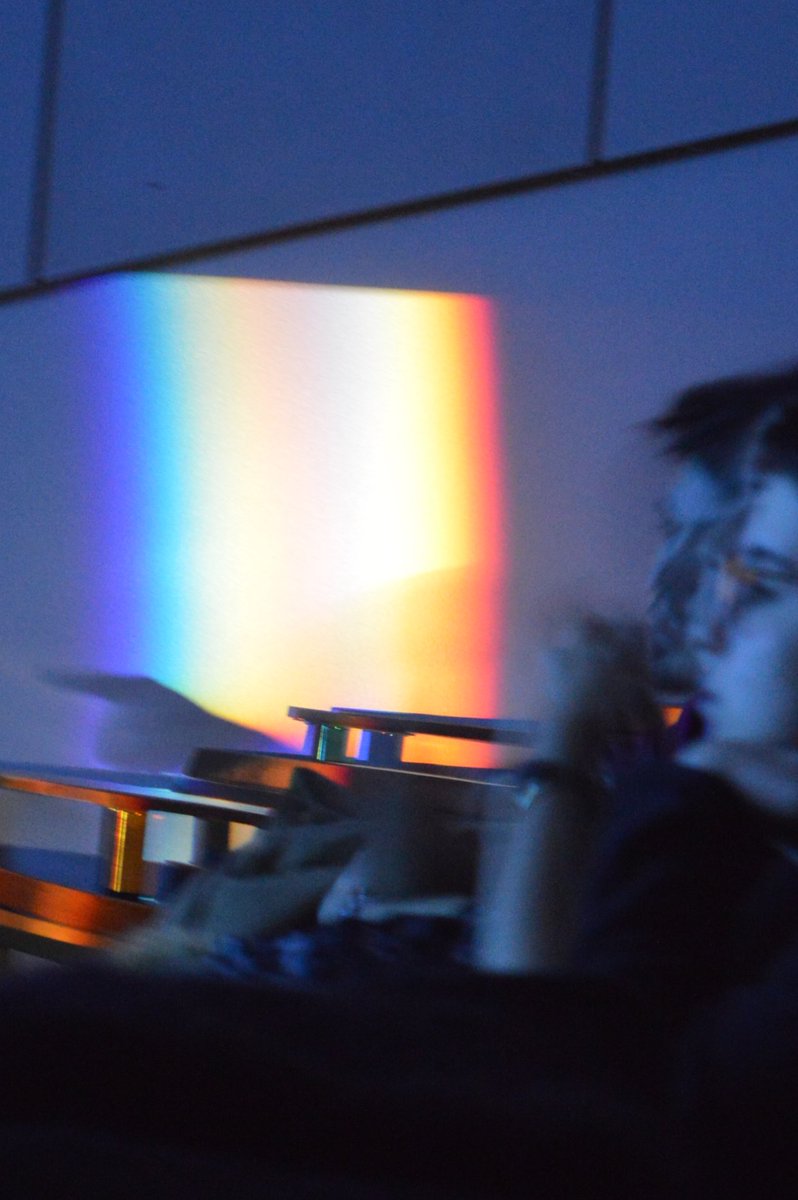

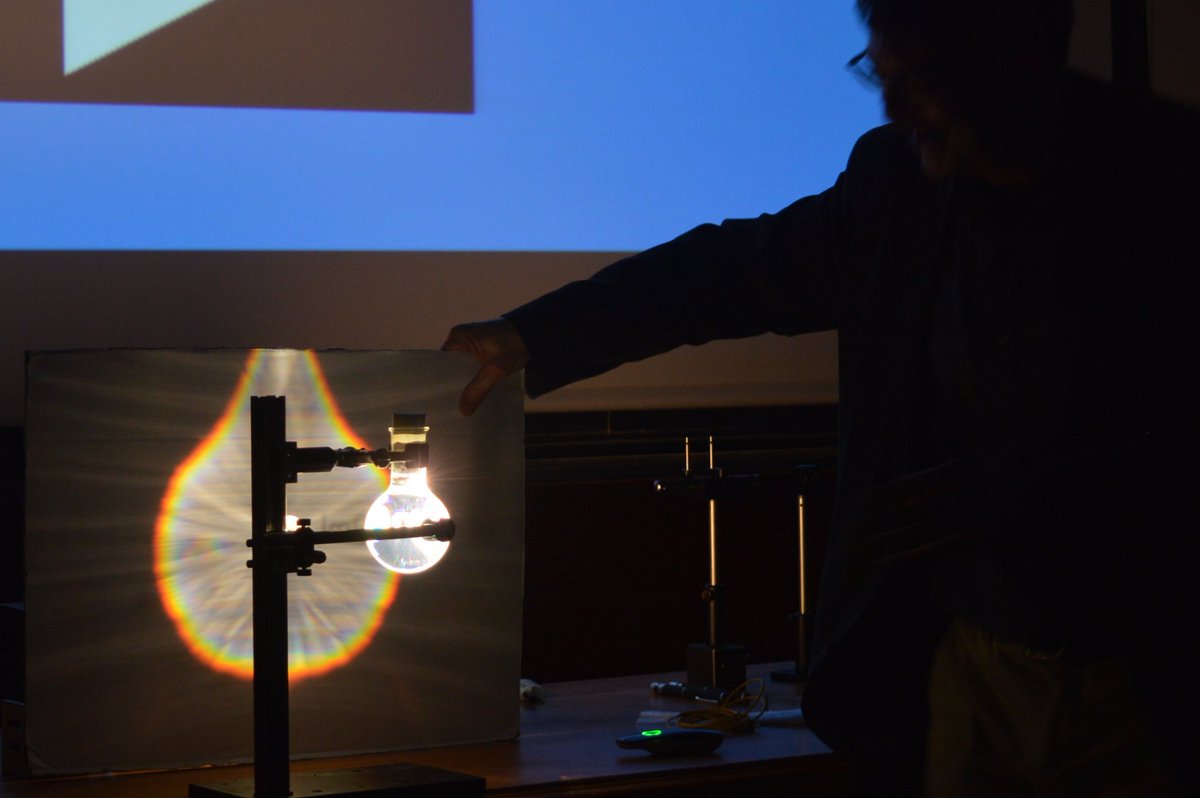 After breaking up white light, we put it back together. Great chance to talk about how flat screen displays work at this point.
After breaking up white light, we put it back together. Great chance to talk about how flat screen displays work at this point. 

 And complementing a rainbow is the classic dispersion of white light in a prism demo - colors seem to have saturated on the card but not on the reflection on the table.
And complementing a rainbow is the classic dispersion of white light in a prism demo - colors seem to have saturated on the card but not on the reflection on the table. 